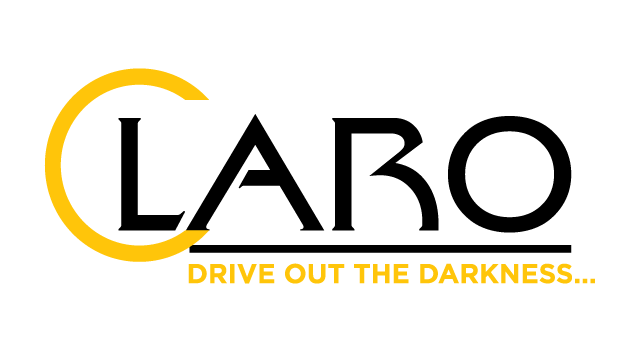In our ever-evolving world, marked by an increasing emphasis on sustainability and cost-effectiveness, the lighting industry has experienced a remarkable evolution. Traditional incandescent bulbs, once the norm, have yielded the spotlight to a groundbreaking lighting solution – Residential LED lighting. This technological leap has transformed how we light up our homes, presenting enormous advantages that far surpass the capabilities of conventional incandescent bulbs. In this comprehensive blog, we will embark on an ‘exploration’ of the myriad benefits offered by residential LED lighting, with an absolute focus on two pivotal aspects: energy efficiency and cost savings.
Energy Efficiency: A Brighter Tomorrow Starts Today
Residential LED lighting stands out as a paragon of energy efficiency in the lighting world. These innovative light fixtures employ advanced semiconductor technology to convert a higher percentage of electrical energy into visible light, a feat that traditional incandescent bulbs can only dream of achieving.
Traditional incandescent bulbs function based on an entirely distinct principle, relying on a heated filament to generate light. This process involves a significant loss of energy in the form of heat, making them highly inefficient. In contrast, LED lights emit minimal heat, directing almost all the energy towards producing light; this fundamental difference in operation results in a substantial reduction in energy consumption.
Moreover, LED lights use substantially less power than incandescent bulbs to produce the same amount of light. They can be up to 80% more energy-efficient. It translates to significant electricity savings, which is eco-friendly and contributes to a reduction in your utility bills.
Cost Savings: Counting the Dollars and Cents
One of the most attractive features of residential LED lighting is the significant cost savings. At first glance, LED bulbs may seem pricier than their incandescent counterparts; nonetheless consider the bigger picture that includes both purchase and operational costs.
- Longer Lifespan: On average, LED lights have a Lifespan of 25,000 to 50,000 hours, compared to the 1,000 to 2,000 hours of traditional incandescent bulbs. An LED bulb’s lifespan can be up to 25 times longer than an Incandescent Bulb. Consequently, you’ll need to replace LED bulbs far less frequently, saving you the time and effort of constantly changing bulbs.
- Reduced Maintenance Costs: With their extended lifespan, LED bulbs save you money on replacement bulbs and reduce maintenance costs. You won’t need to hire a professional to change bulbs as often, and the inconvenience of frequent replacements becomes a thing of the past.
- Lower Energy Bills: As mentioned earlier, LED lights are incredibly energy-efficient. By using less electricity to produce the same amount of light, LED lights lead to reductions in your monthly energy bills. Over time, these savings can add up significantly, offsetting the initial purchase cost of LED bulbs.
- Utility Rebates: Many utility companies and government initiatives promote energy efficiency. They often provide rebates and incentives for homeowners who switch to LED lighting. These rebates can further lower the upfront cost of LED bulbs and provide additional long-term savings.
Advancing Environmental Sustainability: Illuminating the Path to a More Eco-Friendly Tomorrow
Beyond the direct advantages of energy efficiency and cost savings, residential LED lighting plays a ‘pivotal’ role in promoting a greener and more sustainable future. Here’s how:
- Reduced Carbon Footprint: The energy efficiency of LED lights results in reduced greenhouse gas emissions. By consuming less electricity, you’re indirectly contributing to a decrease in the carbon footprint associated with energy generation. It aligns with worldwide endeavors to address climate change.
- Less Toxic Materials: Unlike fluorescent lighting, LED bulbs do not contain hazardous materials like mercury. It means they are safer for the environment and pose minimal risk to human health if they break.
- Fewer Bulbs in Landfills: Due to their longer lifespan, LED bulbs reduce the number of discarded bulbs in landfills. Traditional bulbs need frequent replacement, leading to more waste. LED lights help minimize this environmental burden.
A Brighter Future Awaits
In conclusion, the advantages of residential LED lighting extend far beyond the bright and energy-efficient illumination it provides. By switching to LED lights, you enjoy the benefits of saving energy and money but also play a crucial role in creating a greener and more sustainable world. The initial investment in LED bulbs quickly pays off through lower energy bills, reduced maintenance costs, and significant environmental benefits. Embrace the future of lighting, switch to residential LED lighting, and illuminate your life while contributing to a brighter and more sustainable tomorrow.
If you’re contemplating upgrading to LED lighting, there’s no better time than now to take the leap. The advantages are crystal clear, and the benefits of this lighting technology are too compelling to ignore. It’s a choice that brightens your life and contributes to a brighter future for everyone. Make the switch today and light up your world while imposing a ‘beneficial’ impact on the planet. Claro Lights has gained recognition as a reputable supplier of LED Residential Lighting, delivering top-tier lighting solutions that elevate the aesthetic appeal of your residential spaces while maintaining energy efficiency. For further information regarding our LED Lighting Products, we invite you to explore our official website at https://www.clarolights.in.





